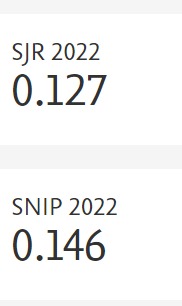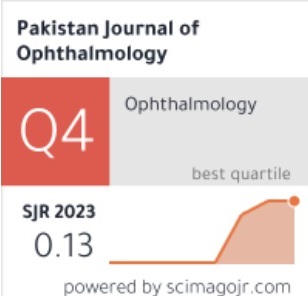Type of Horizontal Deviation in Consanguinity
DOI:
https://doi.org/10.36351/pjo.v34i2.228Abstract
Purpose: To find out the association and types of horizontal deviation in consanguinity.
Study Design: Cross-sectional study.
Place and duration of Study: Department of ophthalmology, The University of Lahore teaching hospital from September to December 2017.
Material and Methods: In this study, 93 patients of 3 to 15 years, with diagnosis of horizontal deviation and positive history of consanguinity were included in the study. While the patients with vertical deviation and negative history of consanguinity were excluded from study. Data was collected by self-designed proforma after taking consent from patients having history of consanguinity. The visual acuity screening and orthoptic assessment were performed on the sample of 93 patients using snellen chart for visual acuity and pen torch for Hirschberg test, cover uncover test and alternate cover test and prisms for krimsky test. Data was analyzed using SPSS version 20.
Results: Out of 93 patients, 55 (59.1) had exotropia and 38 (40.8%) had esotropia. 17 (18.2%) had emmetropia, 22 (23.65%) had myopia, 7 (7.5%) had hyperopia, 25 (26.8%) had myopic astigmatism, 10 (10.7%) had hyperopic astigmatism and the remaining 12 (12.9%) had mixed astigmatism.
Conclusion: It is concluded that consanguinity is related with horizontal deviation and refractive errors.
Key Word: Consanguinity, Horizontal deviation, Myopia.






